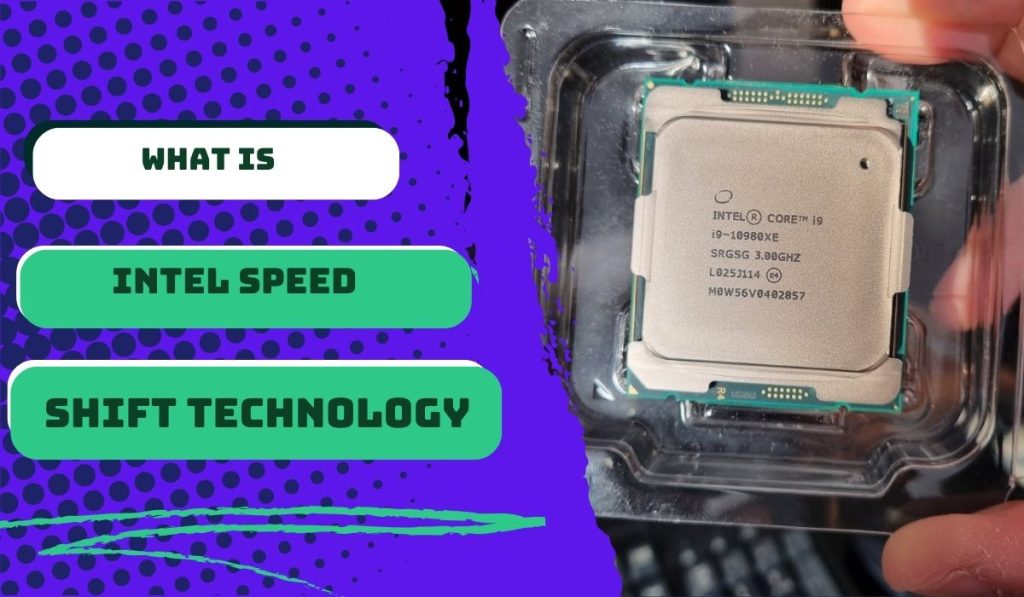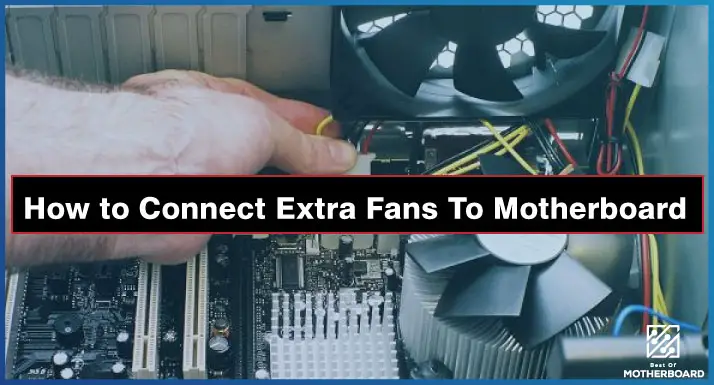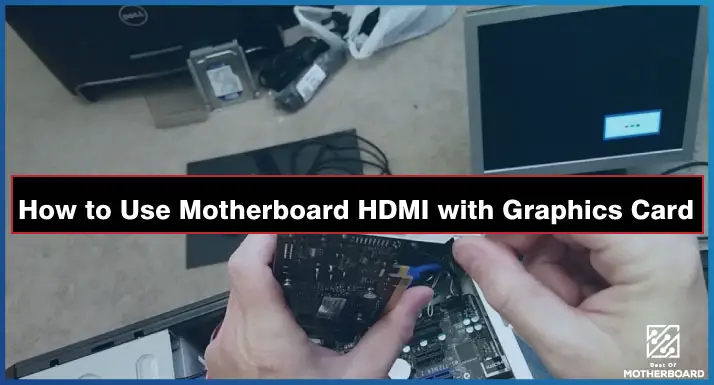Intel Speed Shift Technology allows the processor to directly control its frequency and voltage without going through the operating system. This allows the processor to react more quickly to workload changes and select the optimal P-state for the task at hand.
With my 12th Gen Intel Core i7 processor, I use my laptop for various tasks, including gaming, video editing, and software development. I have noticed that the Intel Speed Shift Technology significantly impacts my laptop’s performance and battery life. For example, when I recently played the video game Cyberpunk 2077 on my laptop without Intel Speed Shift Technology enabled, I was getting around 50 frames per second (FPS) on average. When I enabled Intel Speed Shift Technology, I got a consistent 60 FPS. This was a noticeable performance improvement, and it made the game much more enjoyable to play.
In this article, I will share with you how you can enable Intel Speed Shift Technology and discuss its pros and cons. I will also compare it to other dynamic frequency scaling technologies, such as Turbo Boost and SpeedStep, and provide user recommendations. So, let’s begin.
Overview of Intel Speed Shift Technology
Intel Speed Shift Technology is a dynamic frequency scaling technology that allows the processor to quickly transition between different P-states (power states). P-states are different operating frequencies and voltages that the processor can run at. Intel Speed Shift Technology allows the processor to select the optimal P-state for the task at hand, which can improve performance and battery life.
Intel Speed Shift Technology allows the processor to directly control its frequency and voltage without going through the operating system. This allows the processor to react more quickly to workload changes and select the optimal P-state for the task at hand.
Here are some of the benefits of using Intel Speed Shift Technology:
- Improved performance: Intel Speed Shift Technology can help improve performance by allowing the processor to transition quickly to a higher P-state. This can be beneficial for gaming, video editing, and 3D rendering tasks.
- Increased battery life: Intel Speed Shift Technology can also help to increase battery life by allowing the processor to operate at a lower P-state when the workload is less demanding. This can benefit tasks like web browsing and working in a word processor.
- Reduced heat generation: Intel Speed Shift Technology can also help to reduce heat generation by allowing the processor to operate at a lower P-state when the workload is less demanding. This can be beneficial for laptops and other mobile devices.
The majority of contemporary Intel processors come with Intel Speed Shift Technology turned on by default. However, you may need to enable it in BIOS/UEFI or Windows if it is not already enabled.
Here are some of the times when you should use Intel Speed Shift Technology:
- When gaming
- When video editing
- When 3D rendering
- When performing other demanding tasks
- When you want to extend your battery life
How to enable Intel Speed Shift Technology
You can enable Intel speed shift technology in BIOS/UEFI and Windows. Some motherboards might not be able to enable Intel Speed Shift Technology in BIOS or UEFI. If your motherboard does not have this option, you can still enable Intel Speed Shift Technology in Windows.
To enable Intel Speed Shift Technology in BIOS/UEFI, follow these steps:
- Restart your computer and enter BIOS/UEFI. You can do this by using keyboard keys, Shift + Restart, the Command prompt, or through settings.
- When using keyboard keys, restart your computer and press the right key corresponding to your system to access UEFI/BIOS. The specific key needed could be F1, F2, or F10, depending on your computer’s manufacturer. You can usually identify this key’s location on the lower left or right side of your boot screen as your computer starts up.
- When using Shift + Restart, access the Advanced Startup Options, hold down the Shift key, and click the Restart Power option. Your computer will then initiate the Advanced Startup Options screen. Once this screen is visible, choose Advanced options, and from there, select Firmware settings, and your computer will reboot into BIOS/UEFI.
- Using the Command Prompt, open it with admin privileges, type the following, and hit Enter: shutdown /fw /r. /fw: Combine with a shutdown option to cause the next boot to go to the firmware user interface. /r reboots the computer. The default is 30 seconds, and once the computer restarts, you will see “You’re about to be signed out.” You will see the Startup Menu. Press F10 to proceed. The F10 is for my partner’s HP desktop. It could be different for your laptop or PC.
- Using Windows, go to Settings, then proceed to Update and Security, followed by Recovery, and finally, select Advanced Options. From the Advanced Startup Options screen, choose Advanced Options again, and then select Firmware Settings.
Your computer will undergo an automatic restart, directing you to the firmware settings.
- Go to the Advanced or Performance settings.
- Look for the Intel Speed Shift Technology setting and enable it.
- Save your changes and exit BIOS/UEFI.
This step didn’t work for me, but it worked for my partner, so I tried activating it through Windows.
To enable Intel Speed Shift Technology in Windows, follow these steps:
- Open the Control Panel.
- Go to Hardware and Sound > Power Options.
- Click on “Change plan settings” next to your current power plan.
- Click on “Change advanced power settings”.
- Expand the processor power management section.
- Expand the system cooling policy section.
- Set the Intel Speed Shift Technology setting to Enabled.
- Click OK to save your changes.
Once you have enabled Intel Speed Shift Technology, you should notice an improvement in performance and battery life, especially when performing demanding tasks.
Additional tip: If you are experiencing any problems with Intel Speed Shift Technology, you can try disabling it and see if that resolves the issue. You can also try updating your BIOS, UEFI, and chipset drivers.
Intel Speed Shift Technology vs. Turbo Boost
Intel Speed Shift Technology and Turbo Boost are both technologies that can improve the performance of your processor. However, they work in different ways.
Intel Speed Shift Technology is a feature that helps your processor respond faster to changes in workload. This can lead to better performance and battery life, especially for games and other demanding tasks.
Turbo Boost is a technology that allows the processor to run above its base clock speed when needed. This can improve performance for demanding tasks such as gaming, video editing, and 3D rendering.
Here is a table that summarizes the comparison of Intel Speed Shift Technology and Turbo Boost:
| Feature | Intel Speed Shift Technology | Turbo Boost |
| Goal | Improve overall performance and battery life. | Improve performance for demanding tasks |
| Method | Dynamic frequency scaling | Clock speed boosting |
| When to use | Always | For demanding tasks |
Intel Speed Shift Technology vs. SpeedStep
Intel Speed Shift Technology and SpeedStep are dynamic frequency scaling technologies that allow the processor to adjust its clock speed and voltage to improve performance and power efficiency. However, there are some key differences between the two technologies.
SpeedStep was introduced in 2000 and is the older of the two technologies. It works by adjusting the processor’s clock speed and voltage in response to changes in workload. SpeedStep can also put the processor into a sleep state when it is not being used, which can help save battery life.
Intel Speed Shift Technology was introduced in 2013 and is the newer of the two technologies. It works similarly to SpeedStep but can adjust the processor’s clock speed and voltage more quickly. This can lead to better performance and battery life, especially for demanding gaming and video editing tasks.
Here is a table that summarizes the comparison of Intel Speed Shift Technology and SpeedStep:
| Feature | Intel Speed Shift Technology | SpeedStep |
| Release date | 2013 | 2000 |
| Speed and voltage adjustment | Faster | Slower |
| Benefits | Better performance and battery life, especially for demanding tasks | Improved performance and power efficiency |
| When to use | For demanding tasks such as gaming and video editing. When you want to get the best possible performance from your processor | For general-purpose tasks such as browsing the web and working in a word processor When you want to extend battery life |
Pros and cons of using Intel Speed Shift Technology
Pros:
- Improved performance
- Increased battery life
- Reduced heat generation
Cons:
- It may reduce the lifespan of the processor.
- It may cause instability in some systems.
Conclusion
In conclusion, Intel Speed Shift Technology is a newer and more advanced technology. It offers better performance and battery life, especially for heavy tasks. It is enabled by default on most modern Intel processors, is easy to use, and does not require any special configuration.
To enjoy the top performance of your laptop while gaming, rendering 3D, or editing videos, make sure that the Intel Speed Shift Technology on your system is enabled. This will allow you to get the best possible performance, reduce heat generation, and improve battery life for your system. Also, keep your BIOS/UEFI and chipset drivers up to date.
Thanks for reading.




![How to Add More SATA Ports to Motherboard? [Guide] 5 How to Add More SATA Ports to Motherboard](https://bestofmotherboard.com/wp-content/uploads/2022/02/How-to-Add-More-SATA-Ports-to-Motherboard.jpg)
![How To Install Motherboard Drivers With USB? [Guide] 6 How To Install Motherboard Drivers With USB](https://bestofmotherboard.com/wp-content/uploads/2022/02/How-To-Install-Motherboard-Drivers-With-USB.jpg)